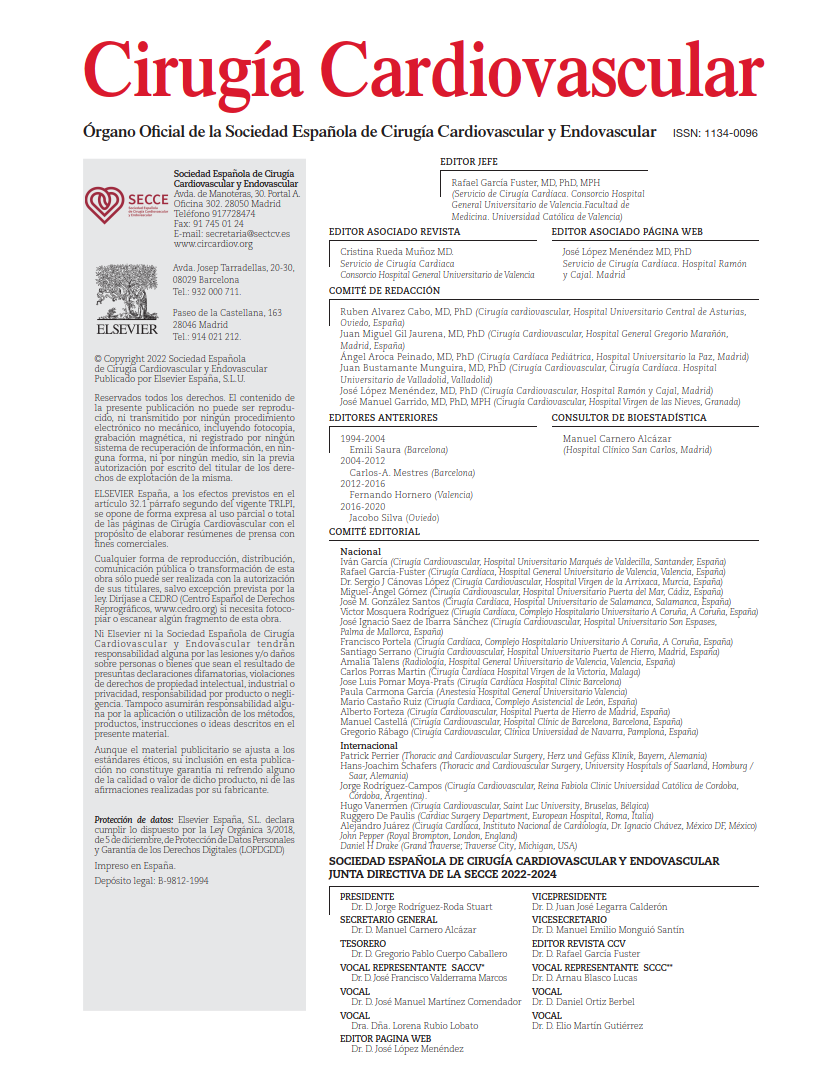Aortic regurgitation is a less prevalent valvular disease than aortic stenosis but remains a source of management uncertainty, particularly in asymptomatic patients or those with early left ventricular dysfunction. The 2021 ESC/EACTS guidelines provide well-defined surgical criteria based on symptoms, left ventricular function, and aortic root dimensions, while also allowing for greater individualization based on disease progression and additional clinical parameters.
Main indications for intervention in severe aortic regurgitation
| Clinical scenario | Recommendation class |
| Symptomatic severe AR | Class I |
| Asymptomatic severe AR with LVEF ≤ 50% | Class I |
| Asymptomatic severe AR with LV end-diastolic diameter ≥ 70 mm or end-systolic diameter ≥ 50 mm* | Class IIa |
| Asymptomatic severe AR with significant aortic root or ascending aorta dilation reaching surgical thresholds (≥ 55 mm; or ≥ 50 mm in genetic syndromes, bicuspid valve with risk factors, etc.) | Class I |
| Moderate or severe AR in patients undergoing cardiac surgery for other reasons | Class IIa |
*In patients with large body surface area, an end-systolic diameter index > 25 mm/m² should be considered.
COMMENTARY:
Surgical indication in AR has traditionally focused more on ventricular dysfunction and progressive left ventricular dilation than on symptoms, which often emerge late. Hence, decision-making frequently relies on echocardiographic signs of chronic volume overload: an LVEF ≤ 50% or an LV end-systolic diameter ≥ 50 mm are clear red flags.
In asymptomatic individuals, close monitoring with periodic echocardiography is essential, given the often silent progression of the disease. While an end-diastolic diameter of 70 mm may seem high, it serves as a marker of advanced remodeling. These thresholds remain unchanged from previous guidelines, although clinical practice has progressively shifted toward a more proactive stance, especially in high-volume surgical centers.
Regarding the aortic root, the management of patients with AR and associated aortic dilation overlaps with that of aortic syndromes. Surgery is clearly indicated when the root diameter reaches ≥ 55 mm, but this threshold decreases to 50 mm in patients with Marfan syndrome, bicuspid valve with family history, or rapid enlargement, necessitating individualized evaluation.
Although current recommendations are not supported by large randomized trials, they are grounded in data from high-volume centers—such as Mayo Clinic and Cleveland Clinic—demonstrating that early intervention before left ventricular deterioration improves long-term survival. Furthermore, advances in cardiac imaging have enabled more nuanced assessments: the presence of myocardial fibrosis on CMR or altered longitudinal strain may support early surgery, though these features are currently considered adjunctive and not formal indications.
It is also worth noting that surgical outcomes in AR are favorable when performed at experienced centers, especially if carried out before the onset of ventricular dysfunction. This reinforces the concept of not delaying intervention until symptoms arise. Surgical strategy is likewise important: in young patients with AR and aortic root dilation, valve repair or the David procedure is increasingly preferred.
Finally, although there are currently no approved transcatheter indications for pure AR, several prosthetic valves designed for non-calcified annuli are under investigation. Future updates may incorporate such approaches, particularly for patients unsuitable for surgery.
In addition to classical indications, there are less common but clinically relevant scenarios in which intervention may be appropriate, particularly when discussed within the Heart Team framework. These special situations are summarized below:
| Clinical scenario | Possible indication |
| Moderate AR in patients undergoing cardiac surgery for other reasons | Consider concomitant intervention (IIa) |
| Severe AR with preserved LVEF but signs of rapid progression | Consider early surgery (IIb) |
| Asymptomatic severe AR with ventricular hypertrophy or myocardial fibrosis on CMR | May support early intervention (IIb) |
| Severe AR in patients planning future pregnancy or with imminent exposure to extreme altitudes/intense activity | Reasonable to consider surgery (IIb) |
These decisions must be individualized within the Heart Team, accounting for surgical risk, disease progression, and life expectancy.
REFERENCE:
Vahanian A, Beyersdorf F, Praz F, et al. 2021 ESC/EACTS Guidelines for the management of valvular heart disease. Eur Heart J. 2022;43:561–632.



